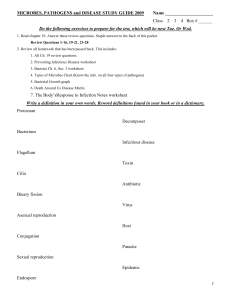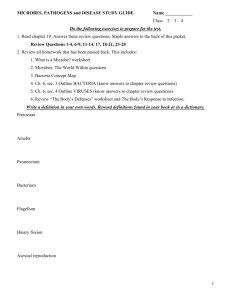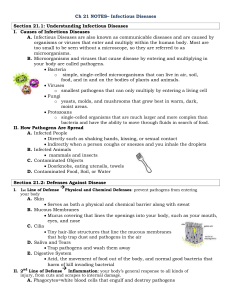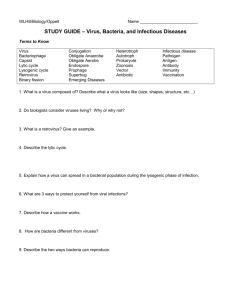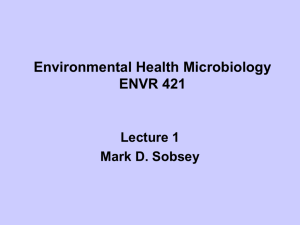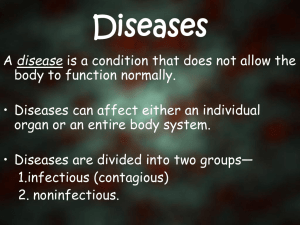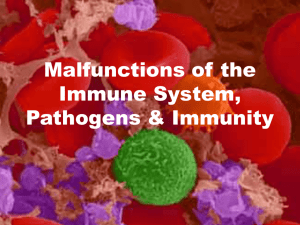MICROBES, PATHOGENS and DISEASE STUDY GUIDE 2009 Name
advertisement
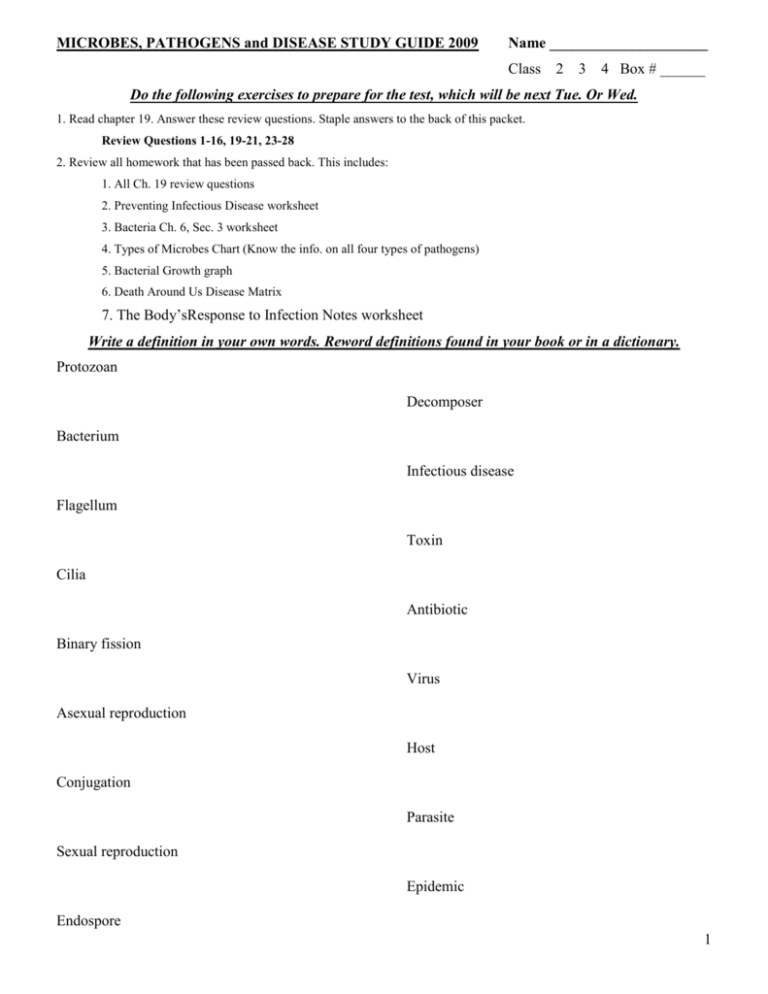
MICROBES, PATHOGENS and DISEASE STUDY GUIDE 2009 Name _____________________ Class 2 3 4 Box # ______ Do the following exercises to prepare for the test, which will be next Tue. Or Wed. 1. Read chapter 19. Answer these review questions. Staple answers to the back of this packet. Review Questions 1-16, 19-21, 23-28 2. Review all homework that has been passed back. This includes: 1. All Ch. 19 review questions 2. Preventing Infectious Disease worksheet 3. Bacteria Ch. 6, Sec. 3 worksheet 4. Types of Microbes Chart (Know the info. on all four types of pathogens) 5. Bacterial Growth graph 6. Death Around Us Disease Matrix 7. The Body’sResponse to Infection Notes worksheet Write a definition in your own words. Reword definitions found in your book or in a dictionary. Protozoan Decomposer Bacterium Infectious disease Flagellum Toxin Cilia Antibiotic Binary fission Virus Asexual reproduction Host Conjugation Parasite Sexual reproduction Epidemic Endospore 1 Pandemic AIDS Pathogen Immunity Pasteuriz(ation) Active immunity Immune response Passive immunity Lymphocyte Vaccine T-cell Vaccination B-cell Nonifectious disease Antigen Cancer Antibody Diabetes antibiotic ----------------------------------------------------------------------------------------------------------- What are the four types of pathogens? 1. 3. 2. 4. What are four ways humans can become infected? 1. 3. 2. 4. 2 Know the human body’s three lines of defense. 1. Barriers 2. a. 3. b. c. d. How does HIV relate to AIDS, and how does it attack the human body? What is the difference between active immunity and passive immunity? Explain. Explain how microbes have helped the earth’s atmosphere. They created much of the earth’s oxygen, and they continue to create about 50% of the oxygen. Are viruses living organisms? Explain. List five ways microbes are helpful to humans. How do viruses infect cells and multiply? Why are viruses considered non-living? How does a vaccination work? How did Edward Jenner discover the process of vaccination? (Look at the timeline of Fighting Infectious Disease on p. 606) How did Alexander Fleming discover antibiotics? 3 List three ways disease might be avoided. Why can bacteria become resistant to antibiotics over time? How would bacterial reproduction from conjugation help a colony of bacteria to become resistant to antibiotics more than if the bacteria reproduce by binary fission? What were the bubbles in the root beer, and how did the yeast create them? Explain how two or more of the human body’s systems work together to keep out or kill harmful pathogens. Explain why the line on your Bacterial Growth Graph keeps getting steeper and steeper. Look at the timeline of Fighting Infectious Disease on p. 606. What do you think are the two most important discoveries? Why? Explain the results of your Fomite Lab investigation. Where did you swab? Why was or wasn’t it a good place to gather bacteria? 4
